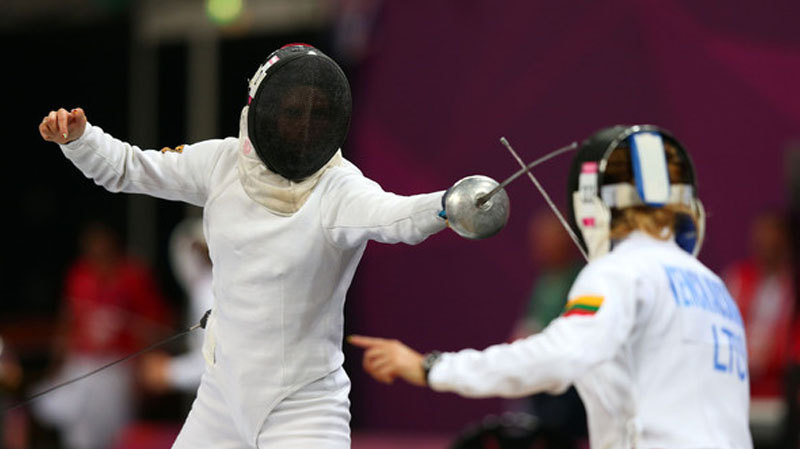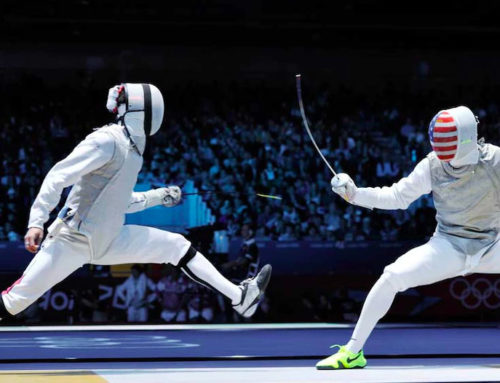The unfolding of modern-day fencing
The fifteenth century brought the beginnings of modern fencing. Spain had the first true fencers, and the first two fencing manuals were published there in 1471 and 1474, but swordplay guilds such as the Marxbruder from Germany began springing up all across Europe. About 1500 the Italians began extensive use of the Rapier. The right hand held te weapon while the left hand held a dagger (often called a Main Gauche) or buckler (a small shield), used for parrying blows. Italian Fencing Masters, such as Agrippa, who invented the four fencing positions (prime, seconde, tierce, and quarte), and masters Grassi and Vigiani, who defined the lunge which was first illustrated by Capo Ferro, became very prolific in this time. The 16th century also brought a large increase in the popularity of dueling. More noblemen at during this period were killed in dueling than in war.
Queen Catherine de Médici of France had many Italian Fencing Masters come to France and develop fencing there. She was so successful that in 1567, her son, King Charles IX, officially recognized the French Fencing Academy, and awarded many hereditary titles to the new French fencing masters. These new masters were the first to classify and define fencing attacks and parries. In 1573 Henry de St. Didier was the first french fencing master to publish a treatise, and one of the first to advocate heavy use of the Épeé instead of the Rapier.
Fencing as an exercise based on speed and skill began when the longer, lighter rapier was developed in Italy during the 16th century. Because of the rapier’s length, opponents had to fight at a distance and quick but controlled lunges, attacking the enemy with the point of the sword, replaced cruder hacking techniques. But the rapier wasn’t a good defensive weapon, so the fencer often had to use his gauntleted left hand to parry his opponent’s thrusts.
Under Louis XIV in France, a change in fashion led to a new kind of sword. The rapier simply didn’t go well with brocaded jackets, breeches, and silk stockings, so French courtiers began wearing a shorter sword. The court sword, as it was known, turned out to be an excellent weapon for fencing because it was both lighter and stronger than the rapier, so it could be used for defense as well as offense. As a result, the modern one-handed fencing technique developed – with the left-hand arm used primarily for balance.
Fencing first came to America in the 1860’s-1870 via immigrant French and Italian fencing masters, and the first American fencing school was founded in 1874. But modern fencing was brought to the United States by the German Turners in the late 1840s. While the Turners emphasized physical training through gymnastics, fencing was also part of their regimen. After the Civil War, many colleges and athletic clubs adopted fencing along with the rest of the Turner gymnastics program.



